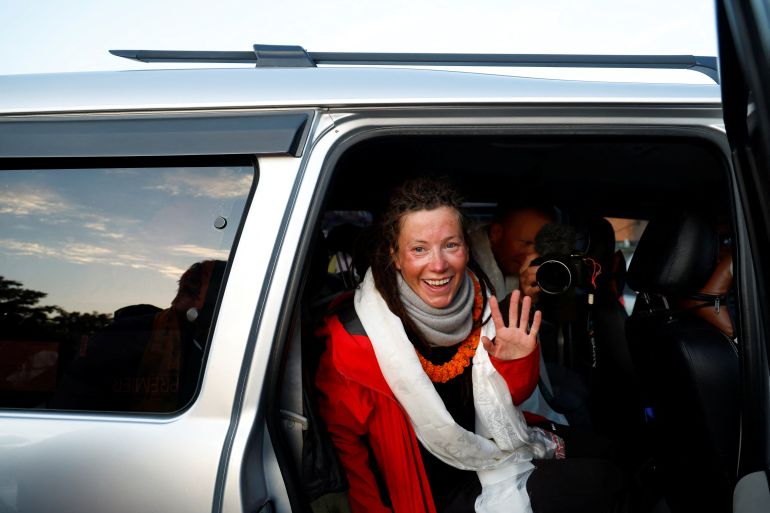Why Norway’s record-breaking climber is facing backlash after Sherpa death
Harila has been accused of walking over a 27-year-old dying Sherpa to set her record.

The Norwegian climber, who recently became the fastest person to summit the world’s 14 highest peaks, was accused of walking over a dying Sherpa to set the record.
Harila was also criticised for celebrating the world record at the base camp that evening.
Keep reading
list of 3 itemsClimbers to mark 70 years of Everest summit amid climate concerns
Everest continues to attract climbers 70 years after first summit
On Thursday, Kristin Harila, 37, said in an Instagram post that she and her team “did everything we could for him at the time”, referring to 27-year-old Sherpa Mohammed Hassan.
What happened?
Harila and her Nepali guide Tenjin “Lama” Sherpa became the fastest people to peak all 14 of the world’s 8,000-metre (26,000 feet) mountains on July 27 after reaching the top of K2 in Pakistan.
They completed the feat in three months and one day. Nepal-born British adventurer Nirmal Purja’s previously held the record of six months and six days, achieved in 2019.
But controversy emerged on social media after drone footage shared by other climbers showed Harila’s team and others on a narrow, harrowing passage, stepping over the body of Hassan, a Sherpa from another team, who later died.
Harila said she, her cameraman and two others spent “1.5 hours in the bottleneck trying to pull him up” but to no avail.
What have the climbers said?
Her cameraman, identified only as Gabriel, was among those who stayed with Hassan, sharing his oxygen and hot water.
“Considering the amount of people that stayed behind and had turned around, I believed Hassan would be getting all the help he could, and that he would be able to get down,” Harila said, adding that Gabriel left after an hour when he needed “to get more oxygen for his own safety”.
When he caught up with Harila, “we understood that he [Hassan] might not make it down” and that “it was heartbreaking”.
On their descent, they discovered that Hassan had passed away. She added that her team of four “was in no shape to carry his body down” safely, noting it would have required at least six people.
Harila said Hassan was “not properly equipped for the climb”, wearing neither a down suit nor gloves.
Austrian climber Philip Flamig told Austria’s Standard newspaper that Hassan was being treated by one person while everyone else continued on towards the summit.
His climbing partner, Wilhelm Steindl, said, “Such a thing would be unthinkable in the Alps. He was treated like a second-class human being.”
“If he had been a Westerner, he would have been rescued immediately,” he added. “No one felt responsible for him. What happened there is a disgrace. A living human was left lying so that records could be set.”
After visiting the sherpa’s family, Steindl said Hassan had taken the job of rope fixer to pay for his diabetic mother’s medical bills despite a lack of experience.
Why did the incident spark outrage?
Harila said she felt the need to give her side of the story due to “all of the misinformation and hatred that is now being spread”, including “death threats”.
Some Instagram users accused her of being “inhuman”.
“Nobody will remember your sporting success, only your inhumanity,” wrote one user on Instagram.
“The blood of sherpas is on your hands,” said another.
Numerous Instagram users defended Harila’s actions and noted the dangers involved, while others questioned why his operator had not equipped him better, with one remarking that “local life is cheap”.
K2, in the Himalayas, is widely regarded as one of the hardest peaks to climb and is avalanche and rock-fall-prone. It is the deadliest of the five highest mountains in the world.